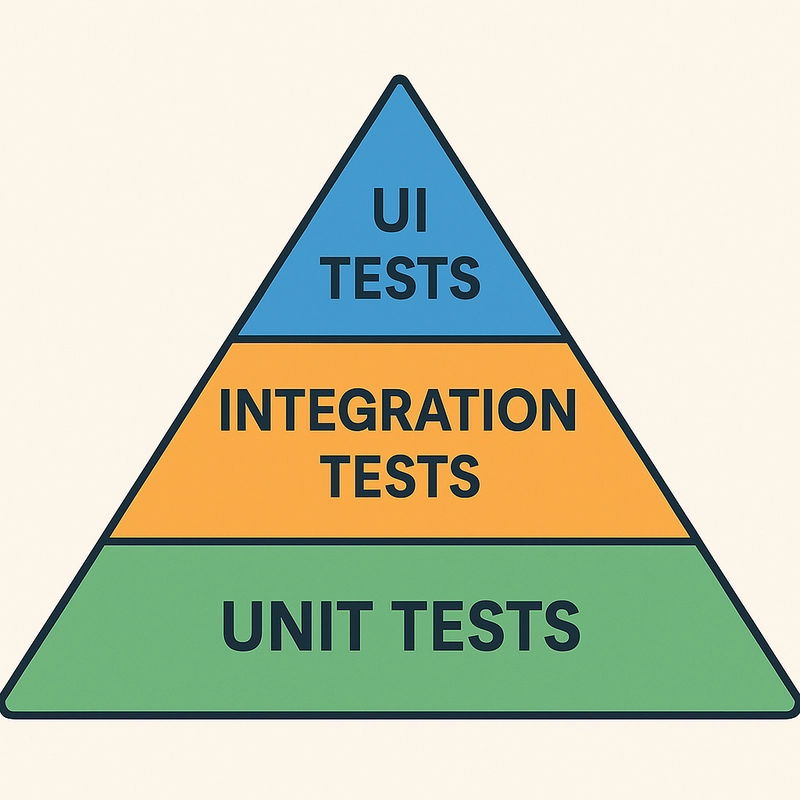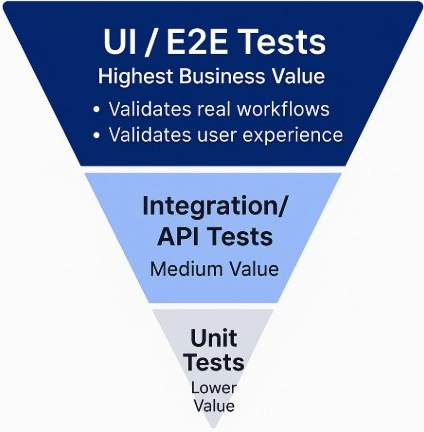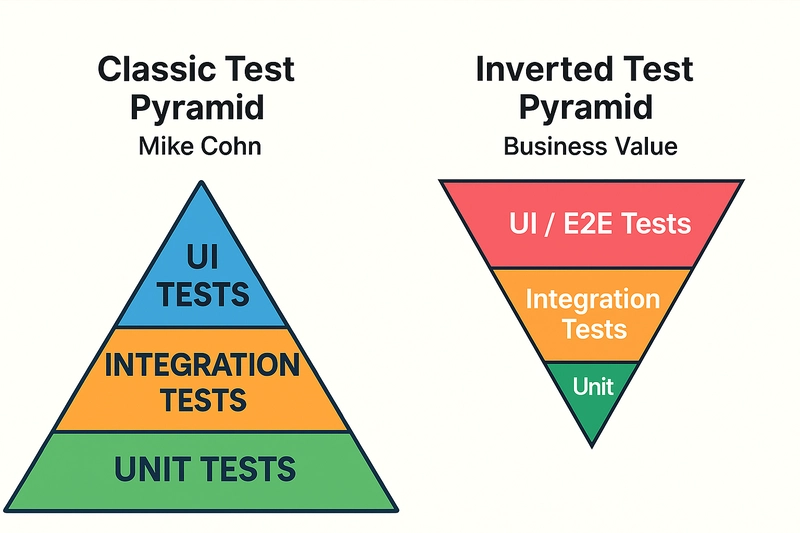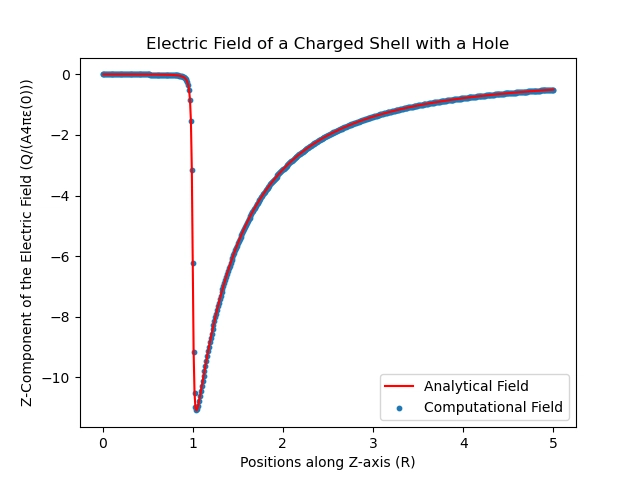Rethinking the Test Pyramid: A Balanced View from Code to Customer
When we talk about automated testing, the Test Pyramid often comes up. This is a popular model introduced by Mike Cohn. While it provides a solid foundation for designing test strategies in software development, it is time we evolve the conversation.
When we factor in real-world business impact and modern testing tools, the classic pyramid starts to look a bit too one-dimensional.
🧱 The Classic Test Pyramid (Mike Cohn)
The original Test Pyramid encourages teams to write:
- ✅ Many fast, isolated unit tests
- 🟡 Some mid-level integration tests
- 🔺 Few slow and brittle UI/end-to-end tests
The idea is that unit tests offer the fastest feedback loop, and E2E tests should be used sparingly to keep CI pipelines efficient.
🧠 But What About Business Perspective?
While the traditional pyramid optimizes for engineering speed and cost, it does not always align with what really matters to the business or the end user.
From that angle, things flip.
Why?
While unit tests help reduce technical risk, they do not fully answer the business’s biggest question: Can users actually complete key workflows like registering, shopping, or submitting a claim without issues? That is where end-to-end testing really delivers confidence.
Integration tests also play an important role by verifying how components work together. However, because they often rely on mocked dependencies, they do not always reflect real-world scenarios. They help reduce systemic risk but still stop short of validating complete user workflows.
🔀 E2E Is Not Just “UI Testing”
Another common misconception is that E2E means just clicking through the UI.
That is only part of the picture. A well-designed E2E test should:
- Use APIs to create test data
- Interact with the UI to simulate real user flows
- Verify backend changes through DB or API assertions
- Perform efficient cleanup
- Validate business rules, not just user interface elements
✅ Modern E2E tests are hybrid by design. They use the right tool for each layer while focusing on validating real user value.
🧪 Example: Placing an Order
Instead of bloated UI-only flows, consider this smarter E2E approach:
- Precondition: Seed test user and product catalog via API
- UI Flow: Login and checkout using Playwright or Selenium
-
Assertions:
- UI shows confirmation
- Database contains the new order
- API returns the correct order status
- Teardown: Delete or reset test data using an API call
This is still an end-to-end test, but it is faster, cleaner, and more reliable.
⚖️ The Balanced Approach: Engineering and Business Confidence
We do not have to choose one pyramid over the other. Instead, we can layer them together:
| Goal | Strategy |
|---|---|
| Fast development feedback | Unit and service-level tests |
| Regression protection | Integration and smoke tests |
| Business confidence | High-value E2E tests |
| User-centered quality | Simulated real-world workflows |
🚀 Takeaways
- The Test Pyramid still holds value, especially for speed and scalability in engineering.
- But do not ignore the inverted business view, where E2E tests bring the most confidence.
- And please, do not treat E2E as just UI automation. Great E2E tests combine API, database, and UI validation to provide robust, focused proof that your system works where it matters most.
Quality is not just about passing unit tests. It is about proving that your system works where it matters most: in the hands of your users.




